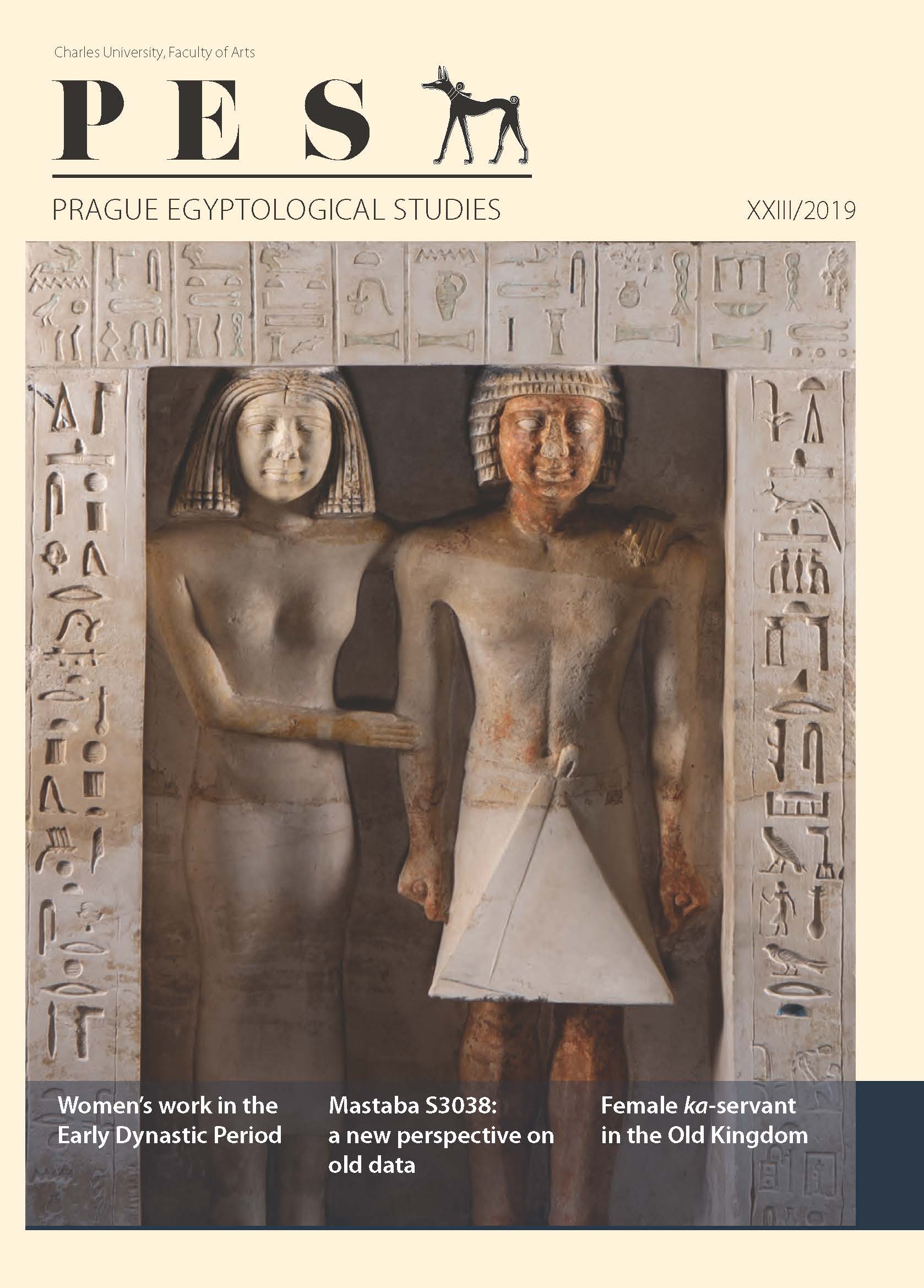A new tomb of transitional type from Abusir South: mastaba of Nyankhseshat (AS 104)
A new tomb of transitional type from Abusir South: mastaba of Nyankhseshat (AS 104)
Author(s): Martin Odler, Marie Peterková Hlouchová, Petra Brukner Havelková, Zdeňka Sůvová, Katarína Arias Kytnarová, Lucie Jirásková, Vladimír BrůnaSubject(s): History, Theology and Religion
Published by: Univerzita Karlova v Praze - Filozofická fakulta, Vydavatelství
Keywords: Old Kingdom – Fourth Dynasty – Fifth Dynasty – transitional type of tomb – limestone stela – human burials – archaeozoology – documentation
Summary/Abstract: Mastaba AS 104 is located above the Wadi Abusiri, to the south-east of the tomb of Kaaper (AS 1). It was preserved almost to the height of the former roofing, hence almost completely. The whole structure was built on a platform with a trapezoid section and, looking from the south, it must have appeared as a two-stepped structure. The core of the upper step was built of rather small undressed blocks of local limestone and contained a rectangular room (Serdab 2) and three deep shafts. It was covered with a layer of large and heavy mud bricks. The superstructure contained the main focal point of the funerary cult (cruciform chapel and Serdab 1). Contrary to other similar structures of roughly the same date, niching decorated only the eastern wall. The tomb was built for a custodian of the king’s property, Nyankhseshat, whose other titles reflect his position in the organization of work, the overseeing of gold procurement and a religious connection to metallurgy. This tomb represents, at least in the Abusir area, currently the last known tomb of transitional type. Apparently, in the Fourth or Fifth Dynasty, the main chapel fell into disuse and the mastaba was used by new owners (scribe of the treasury and royal wab-priest Sekhemka and his spouse, king’s acquaintance Henutsen), which is demonstrated by a limestone stela inserted into the eastern outer wall. Altogether five limestone basins were uncovered, four of them in situ. A number of interesting finds were collected in the shafts (wooden coffin fragments, copper and travertine models, a clay sealing, human bones, animal bones). This article presents an architectural and archaeological description of tomb AS 104 and offers some preliminary analyses of the finds, supplemented also by concise information on human and animal bones found. Last but not least, it describes documentation and methods used in the field.
Journal: Pražské egyptologické studie
- Issue Year: 2019
- Issue No: 23
- Page Range: 49-82
- Page Count: 34
- Language: English

